The plan
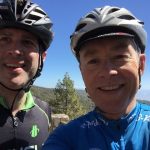 The main objective of this camp was to get in some good base miles with an emphasis on climbing in preparation for my second year of the Mallorca 312 challenge.
The main objective of this camp was to get in some good base miles with an emphasis on climbing in preparation for my second year of the Mallorca 312 challenge.
Living in the New Forest in southern England, the terrain barely meets the criteria for undulating, let alone hilly. If I had to travel abroad, I thought I might as well make it somewhere with long hills, good weather, good roads and very friendly people. Tenerife is all of these, and based on my experience is highly recommended to others with similar objectives!
My ride buddy Simon George and I had a plan to ride easy-steady (i.e. MAF / Zone 2) for 4-6 hours a day, 5-6 days in a row.
Results
Strava summaries of the volume (riding time) and altitude gain are shown below:
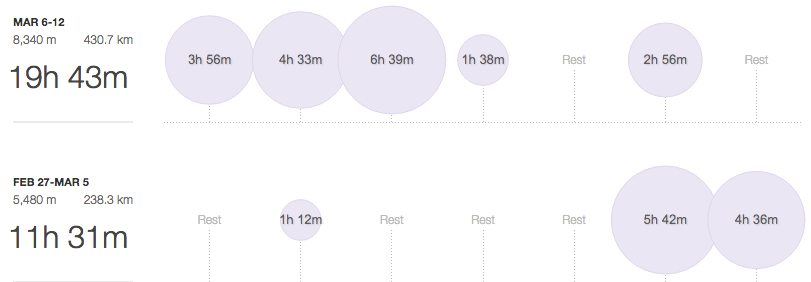
Total ride time was 27 hours, during which we covered 540 km. 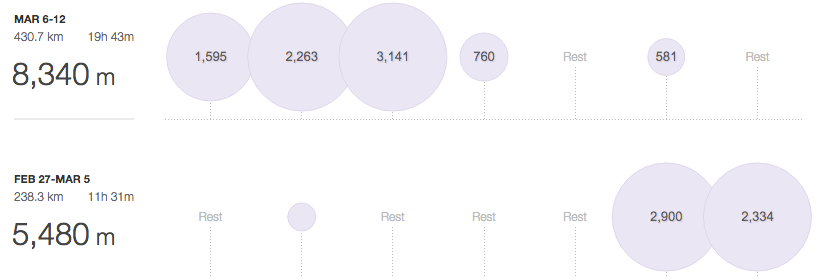
Total altitude gained was almost 14000m, which is more than 1.5 times up Everest from sea level!
A typical ride profile shows that there was almost no flat, though you can include undulating sections that are not directly up or down the volcano if desired.

Average power for whole rides was in a narrow range of 132 – 139 W. Average power during the climbing sections was 162-179 W, with an average heart rate (HR) of 141 – 143 bpm, just below my first ventilatory (lactate) threshold of 145 bpm.
My heart rate variability (HRV) is shown in the ithlete Pro Timeline below, where you can see the five consecutive high training load days and the week afterwards as well. You can see that although I ate and slept well, the high chronic training load meant that muscle soreness really accumulated during the week.
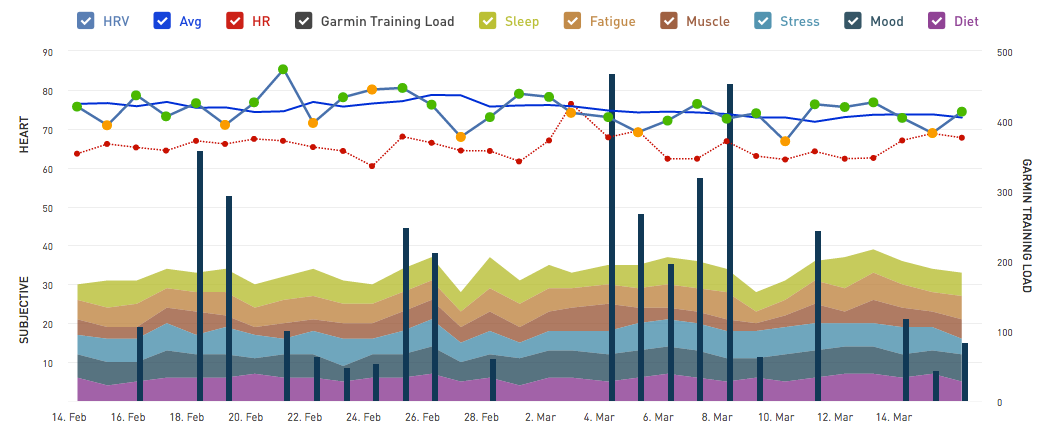
What’s more interesting is to look at my recovery from one day to the next using the ithlete Pro Training Guide. The days have been linked using arrows, whose width is proportional to each day’s training load: 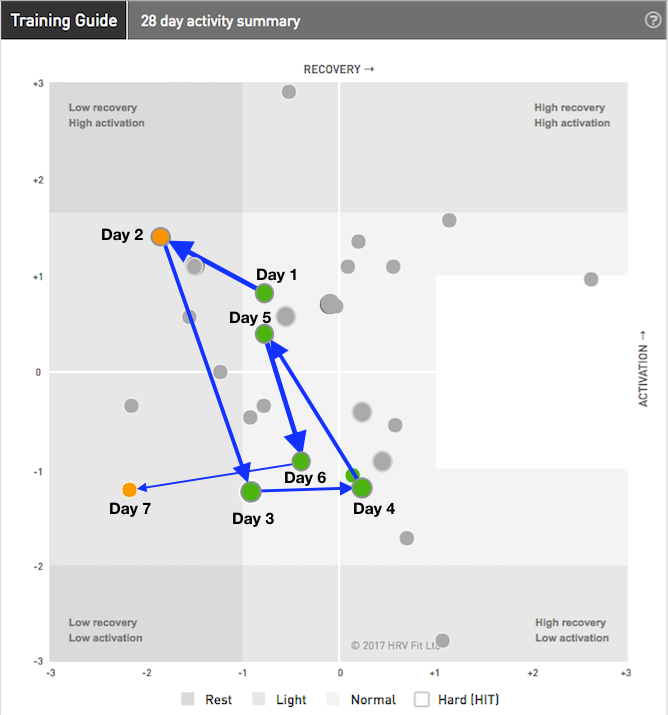
The combination of 2900m climbing, warm temperatures and the physical work at over 1700m altitude on Day 1 produced the mild stress response shown on the morning of Day 2.
From there, the expected response (discussed here) to high volume low intensity produced lower activation with HRV in the normal range for Days 3 and 4.
By Day 5, my body seems to be accommodating the conditions, and this day became our longest – 6.5 hours riding time, and over 3000m of climbing.
The morning of Day 6, I was back in the normal recovery, lower activation region.
Lessons learned
The objective of racking up the vertical metres and hours in the saddle was accomplished, but there are some important lessons I learned during this camp that are worth sharing:
- My self-discipline with eating and especially drinking enough during long rides is really lacking. Although current thinking is for endurance athletes to ‘drink to thirst’, I managed to get dehydrated on Day 5 without ever becoming thirsty. This has always been an issue for me, but it seems my thirst response has got really blunted since age 50. My conclusion is that I must set an alarm to remind me every 20 mins to eat and drink sufficiently. Another challenge is to find foods that continue to be palatable several hours in, especially in warm conditions. I’ve since bought some home weighing scales that include body fat and body water measurements so I can see the impact of different refueling and rehydration strategies.
- Comfort and position on the bike are super important to be able to concentrate on climbing for 2+ hours efficiently. Even very small saddle height and cleat position adjustments make a difference to me in this respect, and getting these right allowed me to remain seated for longer periods of time. This is important, because simply getting out of the saddle raises HR 5 bpm for no extra speed.
- Caffeine is a useful stimulant, but like baby bear’s porridge the quantity needs to be just right for you! Too little and you don’t notice it and too much is counterproductive because it just makes you jittery.
- I start to feel the effects of altitude at about 1700m, where heart rate rises for the same power or rate of climb. This is important for people who are riding to power (or VAM) indicating that the body has to work significantly harder for the same work output. Above 2100m I could really sense a shortness of breath developing.
- Although keeping the intensity to zone 2 allowed my energy and hormone systems to recover sufficiently day to day I accumulated a lot of leg muscle fatigue by the end of the week. This muscle fatigue lasted well over a week in spite of reduced training load once I returned home. I think mentally I was also suffering from training monotony. This is not overreaching in the conventional sense, but nonetheless I was quite glad to finish climbing on Day 6 and spend a little time relaxing at the villa!
